Finding The Most Iconic Photographs In History Ain't Easy…
What, with history (particularly over the last 100 years) being so well documented, it's difficult to narrow down such images.
Here today then, we've got some seriously POWERFUL photographs, ones that will also stir many emotions amongst you.
They're beautiful, sad, joyful, tragic, iconic and historic.
Many images have made it into our consciousness over time, and selecting just a few of the images that have truly awakened Human Awareness is not an easy task. So let's get to it.
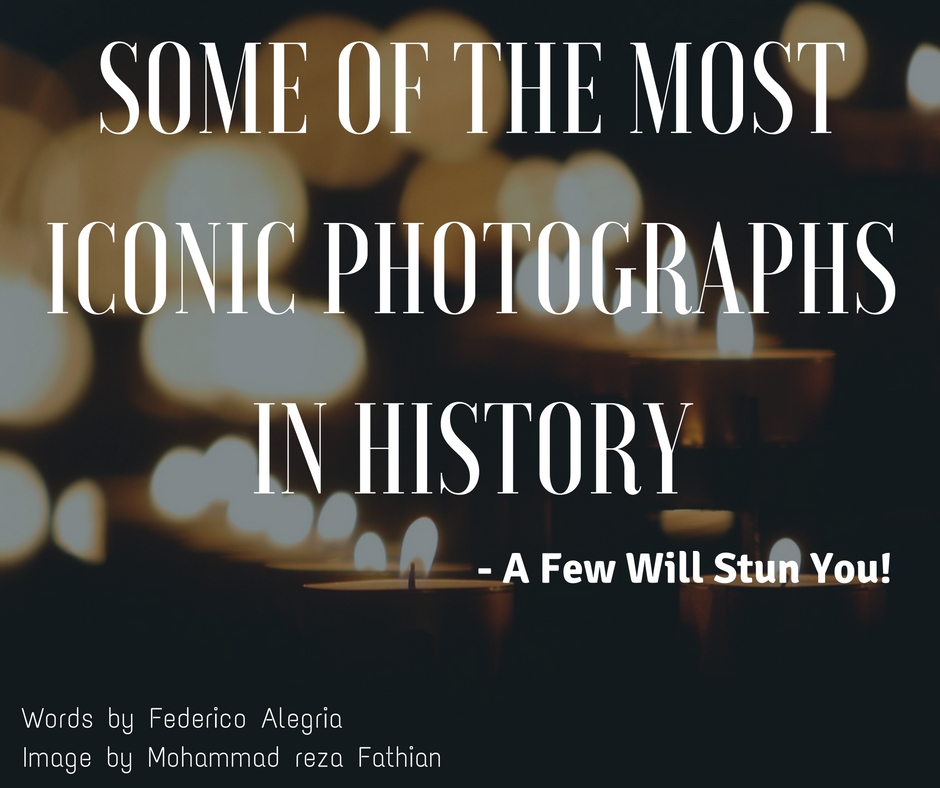
The following selection should be noted is just a sample of the many images that have made humanity think about the problems we all must deal with and are responsible for.
The purpose of photography is to transmit a meaningful message, and that is why I think gear is a simple tool for capturing those stories, and why the best camera is the one you have with you.
I'm Going To Present Some Of The Most Iconic Photographs In History
It’s important that every image that we look at, that gives us a little bit of interest, is approached via contemplative reading. This helps us understand the photographer’s intention for capturing the image.
It is important as well to know a bit of the context of certain images to understand them better.
I want to be clear that my personal opinion of photojournalists, is that they are doing their job, and I don't like to judge their decisions. They were there at the correct moment and time, and they did what they did in order to show us the harsh realities of human life.
Additionally, the horrors of humanity must be remembered so they will not be repeated. This represents just how emotional photography can be.
The best way to remember this message is through photography, because photography has changed the way we remember things.
1. Wait for Me, Daddy – Claude P. Dettloff – 1940
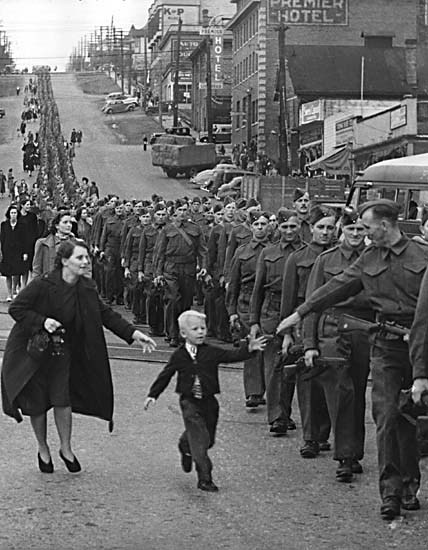
In August 26 1939, Poland suffered a threat from Hitler that started with the seizure of Gdańsk. Fourteen days later, Canada declared war against the German Reich.
In 1940, the British Columbia Regiment marched down Eighth Street at the Columbia Street intersection in New Westminster, Canada to catch a ship destined to sail to a secret location.
Obviously, it was about WWII. Claude P. Dettloff was positioned near the march, hoping to capture a dramatic and compelling composition. He got something else: a meaningful story of the hidden and silent, but very well-known drama of war.
The picture shows five-year-old Warren Bernard running away from the protective arms of his resigned mother. He ran to hold his father's hand.
The moment is breathtaking indeed and makes us think about many things, especially about the harm the adult’s decision does to the innocence of the child. The image itself had extensive exposure and was vastly used in war-bond drives. Ironic, eh?
2. The Weeping Frenchman – 1940
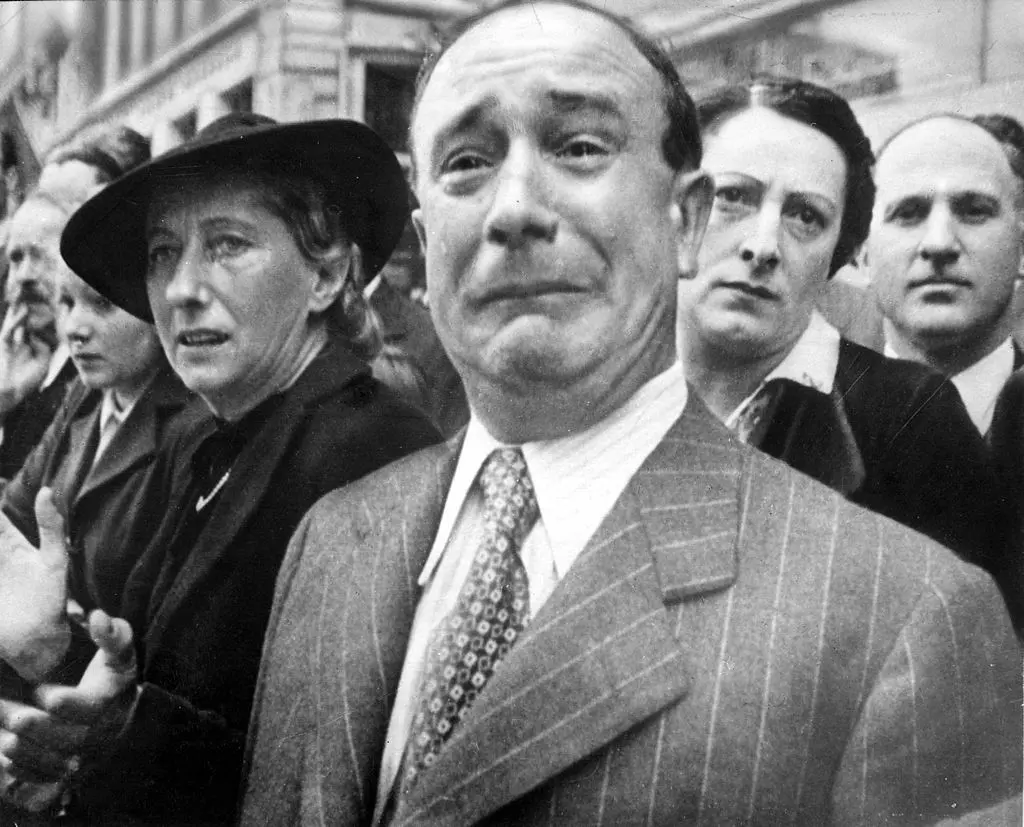
Another drama from World War II. The image shows a deeply patriotic man in front of other people who are staring and waving at the remaining French troops leaving the country at Marseilles Harbor in 1940. What does this mean?
It meant that the French flags had been moved to the south of France, in order to resist surrender – an obvious sign of the Reich's expansion into France.
If somebody knows the name of the photographer behind this true and compelling image, please let me know in the comments! Thank you 😉
3. American GI Moving Toward Omaha Beach – Robert Capa – 1944
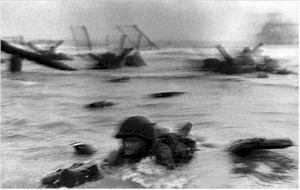
There are many theories about this image and the other Robert Capa images that survived the Normandy Landing on June 6th, 1944, also known as D-Day.
It is known that Capa shot 4 rolls of film in an hour and a half before returning home safe. He almost lost his life, but he survived; unfortunately, his shots didn't enjoy the same fortune.
He arrived at Weymouth on June 7th, handed the film to the army courier and returned to France. That day, Capa's films arrived at the offices of Life Magazine in London.
The crew at the lab rushed things, and the negatives were severely damaged due to a distraction while drying the negatives. Only 11 images survived, and only ten were published by the magazine.
Magnum Contact Sheets states that only 9 negatives survive today, and 2 of the Magnificent Eleven are lost. The negative for the iconic image of the American GI moving toward Omaha has been lost.
Even though the image is a great example of War Photography, its message for me goes beyond war. It invites us to never rush things, since accidents like the one that melted the emulsion can happen due to momentary distractions.
4. V-J Day Kiss In Times Square – Alfred Eisenstaedt – 1945

It feels appropriate that a Jewish Photographer captured the iconic image of the end of World War II. The image shows a passionate moment between a sailor and nurse.
The pair are obvious symbols – two of the great pillars that helped countries endure the war – celebrating the end of a bloody and violent period. The image was taken in New York City's Times Square on August 14, 1945, during Victory Day celebrations.
Victor Jorgensen took a photograph of the same moment, but I prefer Eisenstaedt composition. The photograph doesn't give a clear view of the kissers’ faces, and numerous people have claimed to be the subjects. The image is iconic indeed and turned hope into euphoria in terms of people’s desire for peace.
5. Raising The Flag On Iwo Jima – Joe Rosenthal – 1945
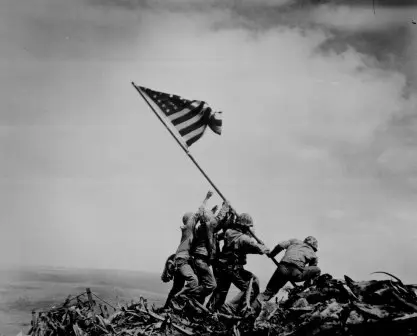
Another iconic image centered on the end of WWII. The image shows a group of marines raising the United States flag on top of Mount Suribachi. The symbol is clear and speaks of a glorious conquest.
The flag was hoisted on the morning of February 23th, 1945. After the flag’s placement, it was handed to the Navy’s office. The soldiers didn’t want the space to be left blank, so they placed another flag.
The second placement of the flag is what Rosenthal captured with his Speed Graphic.
The photograph is almost theatrical; its drama is worthy of iconic status. The image became popular very quickly thanks to its usage in propaganda, which I think is acceptable for this patriotic image (unlike the propaganda usage of Dettloff's Wait for Me, Daddy).
6. The Immolation Of Thích Quảng Đức – Malcolm Browne – 1963

In June of 1963, a Vietnamese Mahayana Buddhist monk, Thích Quảng Đức, immolated himself as a protest against pro-Catholic policies and discriminatory Buddhist laws.
JFK publicly stated that “No news picture in history has generated so much emotion around the world as that one.”
There are other images of the previous and latter moments of the protest’s best-known image. The serenity of Thích Quảng Đức hypnotizes me and leaves me very moved.
The immolation lasted for up to ten minutes, and after the fire had consumed him, his charred body fell to the ground. Various monks gathered around his body and covered it with yellow robes.
7. The Kiss Of Life – Rocco Morabito – 1967
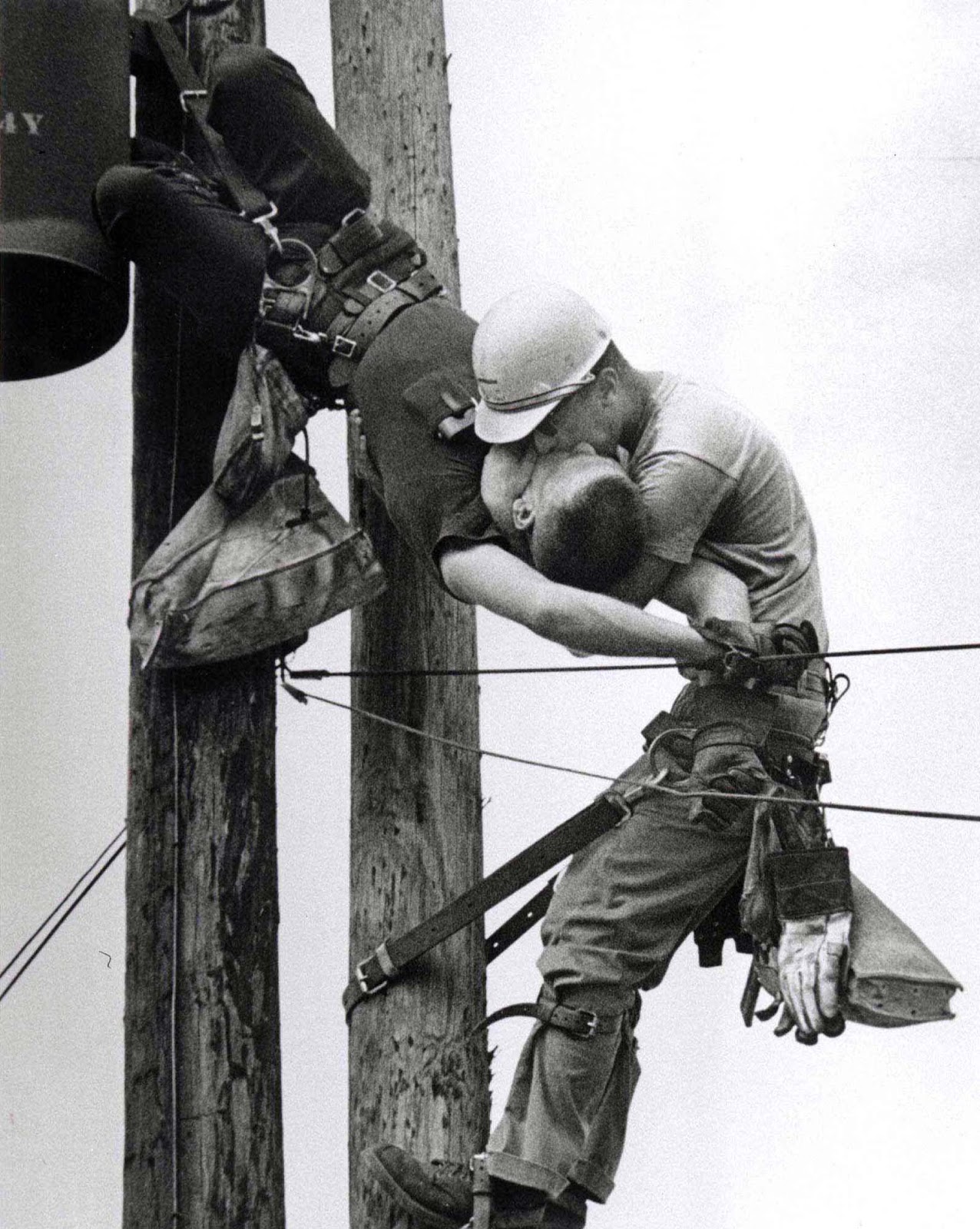
A great image that speaks out loud about human compassion. Rocco Morabito won the 1968 Pulitzer Prize for Spot News Photography with this image.
The image shows J.D. Thompson giving mouth-to-mouth resuscitation to a co-worker. His co-worker was Randall G. Champion, who fell unconscious after coming into contact with a low-voltage line.
Morabito was driving to another assignment when he saw Randall Champion dangling backward from the pole. He called an ambulance and then grabbed his camera.
8. Flower Child – Marc Riboud – 1967
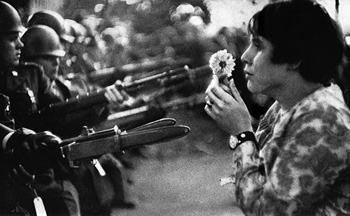
This scene happened outside The Pentagon on October 21, 1967, and is considered as an iconic symbol of the early antiwar movement of the time.
This image served as an icon because of the eerie juxtaposition of a young girl offering a flower to a group of soldiers with their rifles in threatening positions. She got to speak with the soldiers, and they lowered their guns. Things ended peacefully for the girl.
Give it a small contemplative reading, and you'll feel disturbed by the idea of a young peaceful person confronting a large group of military men aiming their guns toward her.
9. Tank Man – Jeff Widener – 1989
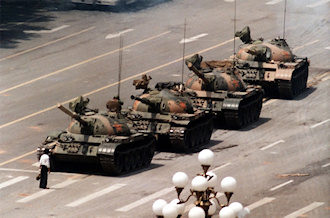
To me, one of the greatest examples of the power of protest. The iconic image speaks for itself. A still-unknown person stops a large column of threatening tanks. It’s similar to the Flower Child image but escalated to the ludicrous.
The iconic image shows just a portion of what the tank column was really like. You can see the full footage here.
10. The Vulture and The Little Girl – Kevin Carter – 1993
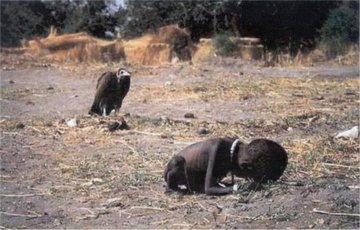
Much has been said about this image, and the controversy is evidence of the importance the image carried – and still does – in people's consciousness. This image awakened global awareness of the harsh famine and starvation that the Sudanese people were going through.
Some have said the girl was starving to death; others say she was crawling towards the UN deployment; others have even stated that the little girl was just peeing. It doesn’t matter. The image is a highly important statement about human realities.
Kevin Carter was highly criticized for his responses when other journalists asked about this after the photograph was taken. Some said he chased the bird away, others don't.
The St. Petersburg Times in Florida wrote: “The man adjusting his lens to take just the right frame of her suffering might just as well be a predator, another vulture on the scene.”
The only thing I know, from reading a book by Greg Marinovich and João Silva entitled The Bang Bang Club, is that Carter was a highly complex person and the scrutiny after the image went public eventually pushed him to commit suicide. There is a great movie based on this book.
Summary
So, there we have my list of 10 photos – some of the most iconic photographs in history, and with good reason. As you'd expect, these all create some sort of emotion from deep inside us that we're not always prepared for.
Some of these photographs from last century are disturbing, but, we must ensure that these moments in human history are never forgotten, hence my reasoning behind this article on what constitutes an iconic image.
Learning about history through photography and photojournalism in particular, can teach us just how capable and brave these professionals were – often completely unequipped to deal with war, but with a camera and some film, they produced history on a roll on negatives.
Further Resources
21st-Century Images that Raised Human Awareness
- The Falling Man – Richard Drew – 2001
- Seizure of Elian Gonzalez – Alan Diaz – 2001
- The Vancouver Riots – Richard Lam – 2011
Recent images that Awoke Human Awareness
Learning Materials
Feel a little stuck in your photography (despite being inspired by these iconic images)? Well, learn to dramatically improve your Creative Output with the Fun and Challenging Assignments From the Creativity Catalog!



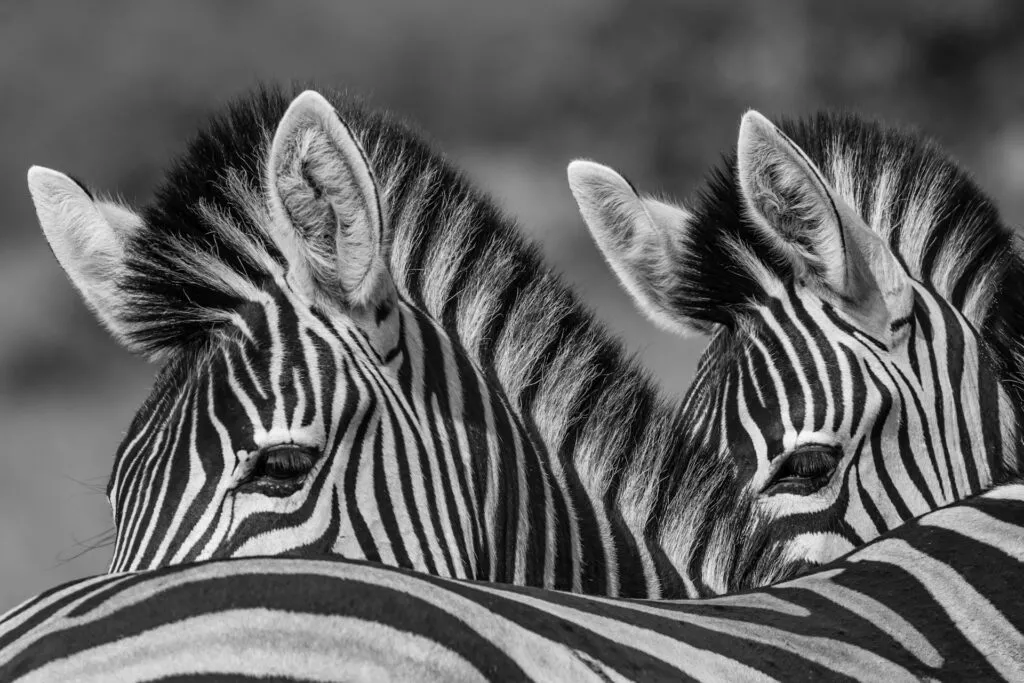
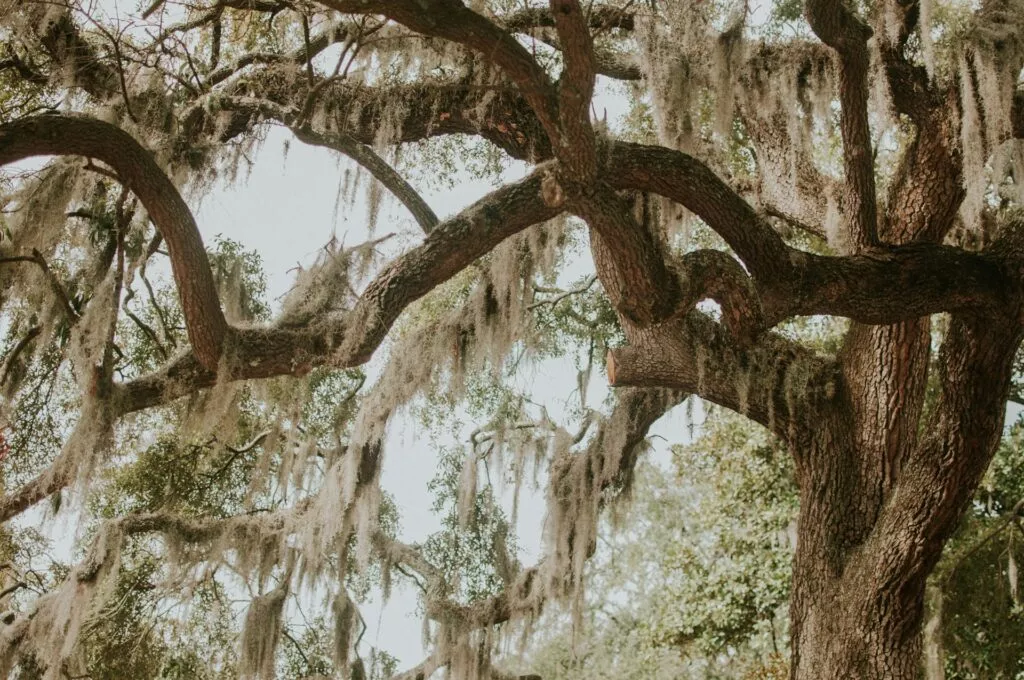
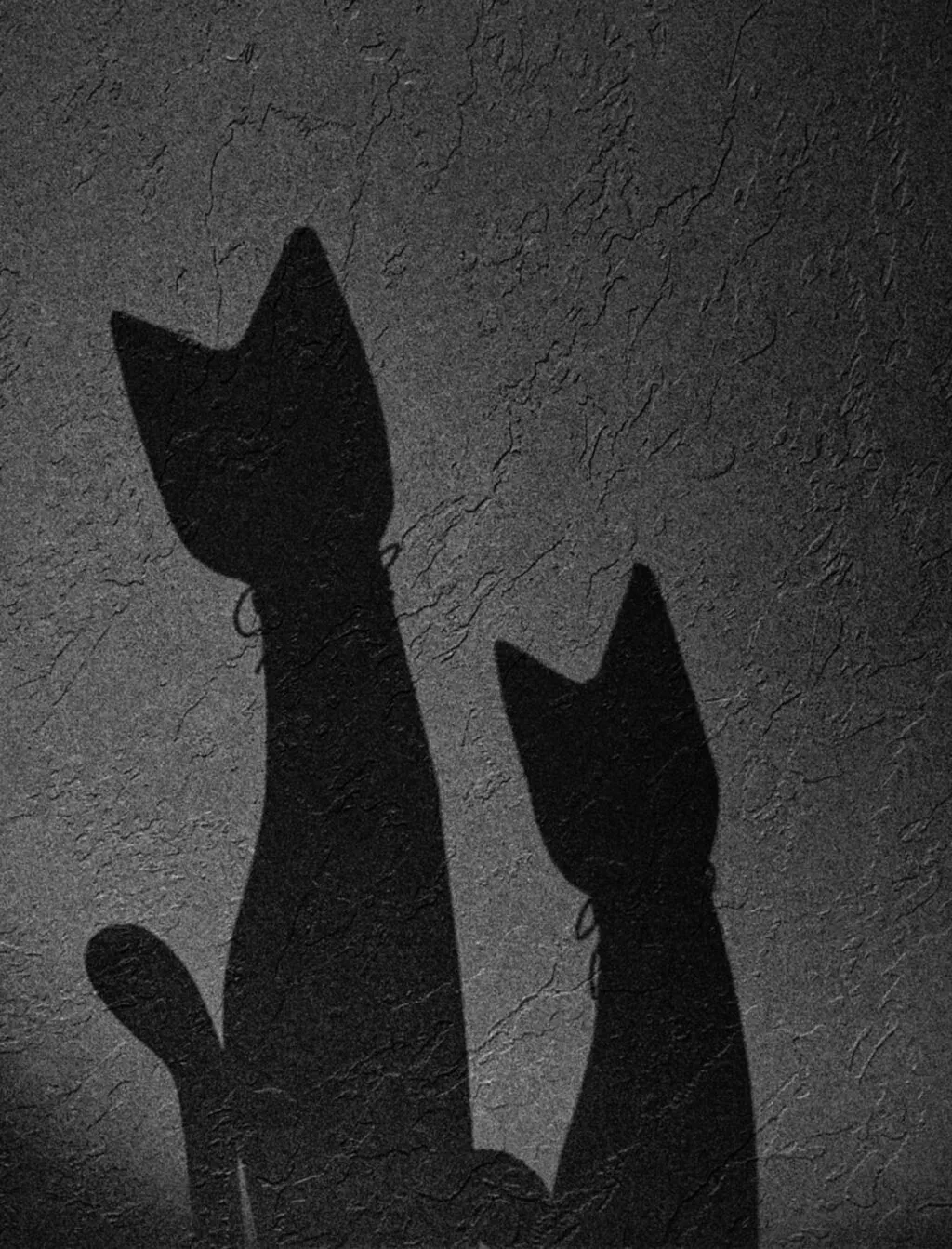
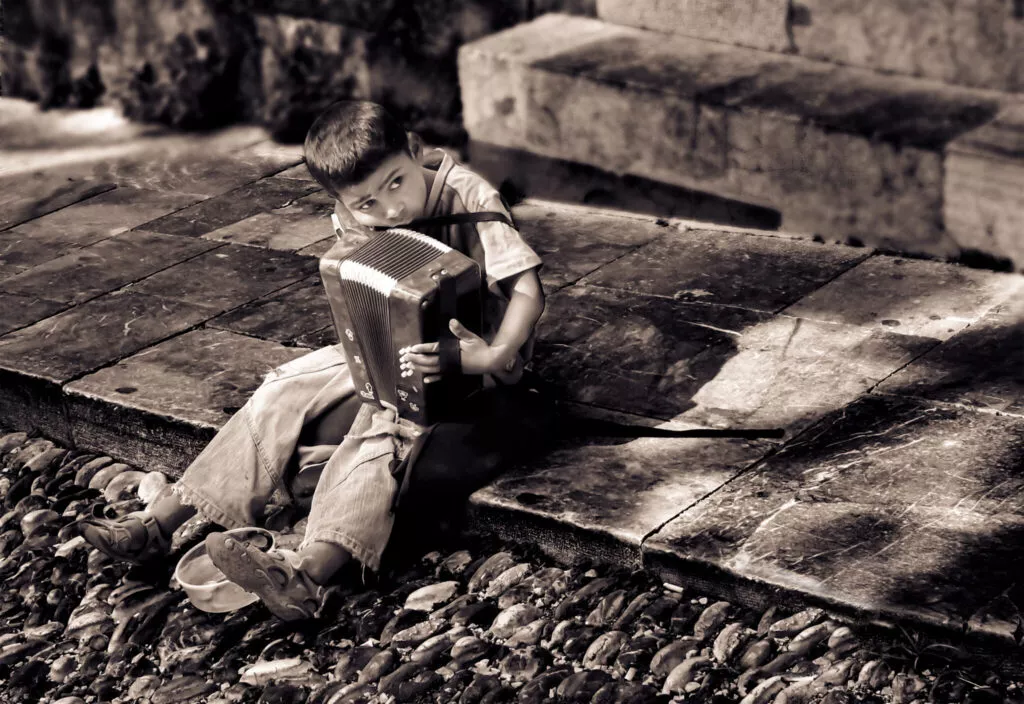
2 Comments
Here is the information on the photographer:
https://iconicphotos.wordpress.com/tag/george-mejat/
His name is apparently: “George Bejat”
The Frenchman in question is: Monsieur Jerôme Barzetti
Eugene Smith also appears in other sources as the photographer.